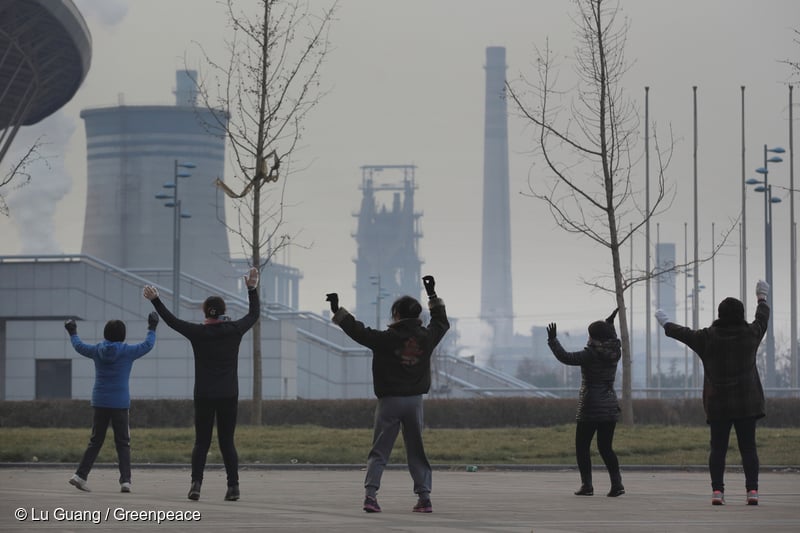BEIJING, 14 December 2021 – In Belt and Road countries, China’s public finance institutions could develop as much as 679.69 gigawatts (GW) of solar power and 26.55 GW of wind power by 2030, effectively cutting 1.8 billion tons of carbon emissions and creating 310,000 new jobs, new research from Greenpeace East Asia shows.
At the Forum for China-Africa Cooperation (FOCAC) in early December, there were frequent mentions of green or low-carbon development and expanding renewable energy. But there were no clear policy targets or standards, either in terms of power capacity, investment, or policy.
“Chinese investors require incentives from domestic policy. That starts with clear targets. Without clear targets, solar and wind projects around the world will continue to struggle for financial support in a market slanted against them. General support with no clear targets won’t solve that,” said Zhang Jing, a senior climate and energy campaigner in Greenpeace East Asia’s Beijing office.
In many developing countries, including those taking part in the Belt and Road, solar and wind projects can be difficult to finance due to inflexible project financing standards and an inflated perception of risk for renewable energy projects. After China announced an end to new overseas coal build-outs in September, 350 Africa, a coalition of more than 120 civil society organizations from across the continent, called for China to be a responsible partner in supporting renewable energy.
To outline the potential impact of comprehensive solar and wind energy support, Greenpeace East Asia compared installation capacity, power demand, and project life cycle in key recipient countries.¹ Projecting the total capacity that would be built in three scenarios, where Chinese public finance took up a 5%, 10%, or 15% market share,² results showed that China could by 2030 develop between 226.56 GW and 679.69 GW of solar power and between 8.85 GW and 26.55 GW of wind power. At a 15% market share, these figures combined would account for a 5.64% cut and 16.93% cut of Belt and Road countries’ combined 2018 carbon emissions, respectively.
A co-benefit analysis³ showed this potential investment creating between 150,000 and 310,000 new jobs. And, with more renewable energy generating capacity, the investment would save between 256 and 768 million tons of oil equivalent.⁴
“Energy has been a core channel of Belt and Road investment. Clear policy targets once paved the way for coal. Now they need to open the door for solar and wind. in the gaps that the private sector can’t access yet,” said Zhang.
Chinese regulators and policymakers need to establish clear, binding green finance policies. This involves both the regulation and standards for Chinese financiers and the investments in recipient countries, where investors should establish not only renewable energy projects, but also the infrastructure for these systems, including energy grids and the supply chain in upstream and downstream industries.
Notes
Full reports are available in Chinese here.
- Including South Africa, India, Turkey, Thailand, Poland, South Korea, Romania, Pakistan, Ukraine, United Arab Emirates, and Bulgaria.
- Market share scenarios were determined by the investment capacity and total installation capacity of key Belt and Road countries. For most countries, the market share now sits between 5% and 10%.
- Tons of oil equivalent, or toe, represents the quantity of energy contained in a ton of crude oil (41.868 gigajoules). This unit is used to express and compare different sources of energy.
Contacts
August Rick, Greenpeace East Asia, Beijing: [email protected], +86 17510404599
Greenpeace International Press Desk: [email protected], +31 (0) 20 718 2470 (available 24 hours)



